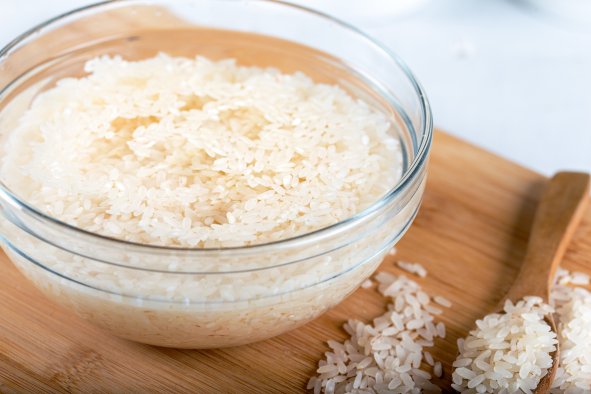A study of archaeological remains from the 16th century has uncovered fascinating insights into the specialist laboratory of a European Renaissance alchemist.
The presence of a "mysterious" metal in the lab is among the finds reported by the study, which was published in the journal Heritage Science.
The remains that are the focus of the research consist of five shards—four glass and one ceramic—found during an excavation conducted between 1988 and 1990 at the site of Uraniborg, a former castle located on the island of Ven, Sweden.
The castle once served as the residence and observatory of Danish astronomer Tycho Brahe (1546-1601), who was also known for his interest in alchemy. In fact, Brahe equipped Uraniborg with a state-of-the-art alchemical laboratory when it was erected in 1580 on Ven, which was historically under Danish rule.
After Brahe's death, a royal decree was issued ordering Uraniborg to be demolished. Only a few remnants of the alchemical laboratory, such as the five shards, have survived to this day.
In the latest study, archaeometry expert Kaare Lund Rasmussen of the Department of Physics, Chemistry and Pharmacy at the University of Southern Denmark conducted a chemical analysis of the shards. The research's aim was to shed new light on Uraniborg's alchemical laboratory.
Alchemists in Brahe's era were notoriously secretive and largely did not share their knowledge with others. As a result, little is known about the activities that the astronomer and alchemist engaged in while working in his lab.
Only a few of his alchemical recipes have survived. From the available evidence, it appears that Brahe formed part of a group of alchemists whose aim was to develop medicines to treat diseases of the time, including plague, syphilis and leprosy. This separated him from those alchemists seeking to produce gold from less valuable metals and minerals.
"It may seem strange that Tycho Brahe was involved in both astronomy and alchemy, but when one understands his worldview, it makes sense," curator Poul Grinder-Hansen from the National Museum of Denmark said in a press release.
"He believed that there were obvious connections between the heavenly bodies, earthly substances, and the body's organs," said Grinder-Hansen, a co-author of the study who helped to place the findings in a historical context.
The goal of the chemical analysis conducted in the study was to detect any traces of chemical substances that the original glass and ceramic containers—from which the shards originated—came into contact with.
This analysis detected significant levels of nine trace elements on either the inside or outside surfaces of the shards. Those elements are nickel, copper, zinc, tin, antimony, tungsten, gold, mercury and lead.
Four of these elements—copper, antimony, gold and mercury—are known to have been used in the three preserved recipes of Brahe's medicinal treatments.
The study's authors said these preparations could therefore have been made in the alchemical laboratory on Ven. But they added that the presence of these elements does not represent definitive proof that they were used for making Brahe's medicines.
The other five elements were not mentioned in the preserved recipes and are, therefore, possibly residues from alchemical experiments of an "unknown" character, the authors said.
"The results of the present work offer a first unique glimpse into the alchemical work of Tycho Brahe's laboratory on Ven," the researchers wrote in the study.
Most of the elements detected in significant quantities on the shards are not necessarily surprising. For example, gold and mercury were frequently used to treat a host of ailments—at least among the elite of the time.
"But tungsten is very mysterious," Rasmussen said in the press release. "Tungsten had not even been described at that time, so what should we infer from its presence on a shard from Tycho Brahe's alchemy workshop?"
Tungsten was not formally identified as a new element and isolated until around 180 years after Brahe's death, which raises the question of how traces of it ended up on the shards. Tungsten occurs naturally in certain minerals, but, to date, it has not been found in nature in its pure form.
One possible explanation for its presence on the shards, according to the researchers, is that such a mineral must have undergone some form of processing in the Uraniborg lab that separated the tungsten, without Brahe's knowledge.
Another potential explanation suggests that Brahe may have been aware of tungsten's existence, albeit not by that name. In the first half of the 1500s, German mineralogist Georgius Agricola reported that he had noticed an unusual substance in tin ore from the Saxony region. Agricola named this substance "Wolfram"—meaning "wolf's froth" in German. It was later renamed tungsten in English.
"Maybe Tycho Brahe had heard about this and thus knew of tungsten's existence. But this is not something we know or can say based on the analyses I have done. It is merely a possible theoretical explanation for why we find tungsten in the samples," Rasmussen said.
Do you have a tip on a science story that Newsweek should be covering? Do you have a question about archaeology? Let us know via science@newsweek.com.
Disclaimer: The copyright of this article belongs to the original author. Reposting this article is solely for the purpose of information dissemination and does not constitute any investment advice. If there is any infringement, please contact us immediately. We will make corrections or deletions as necessary. Thank you.



